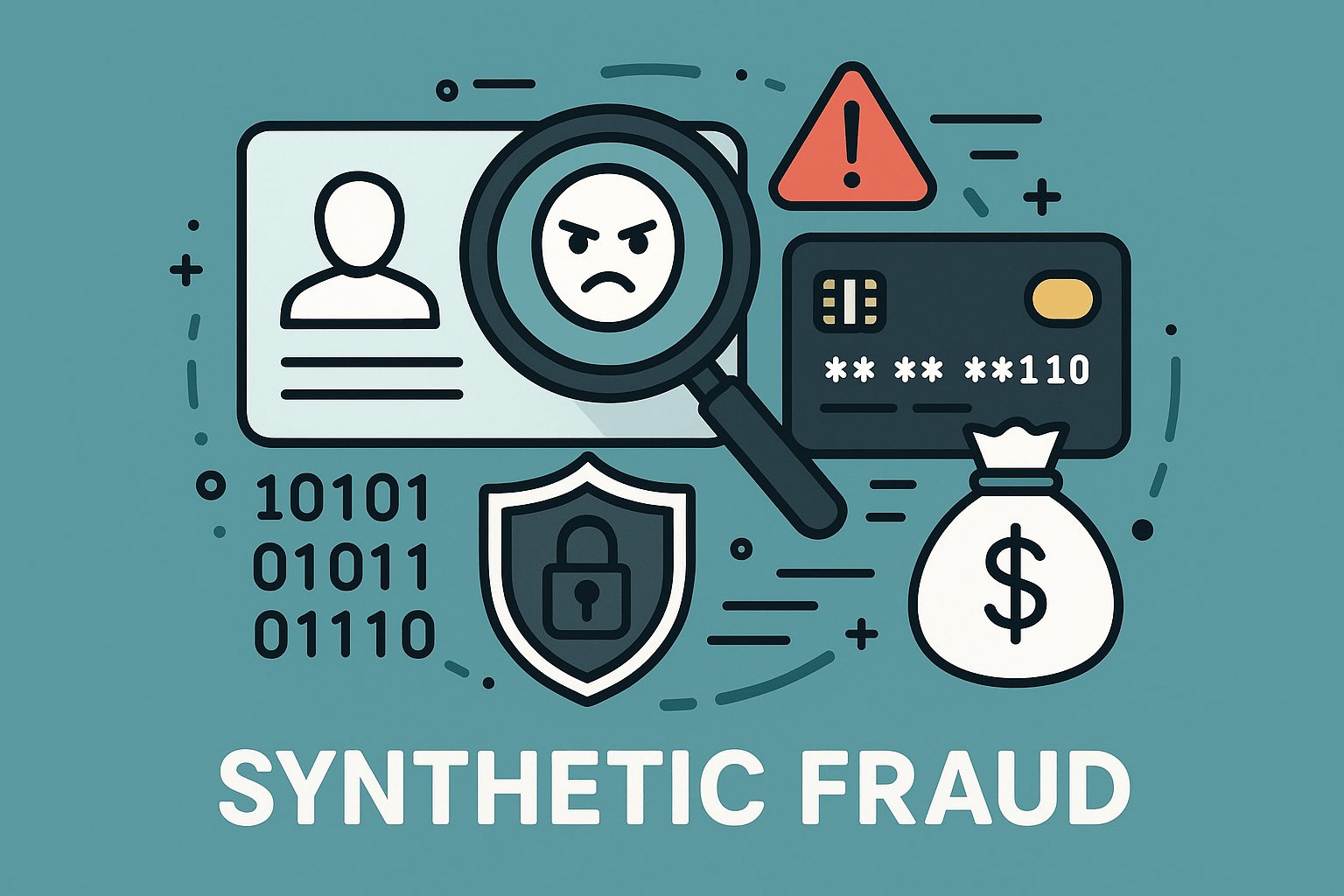
In today’s digital economy, financial institutions and online businesses face an increasing threat known as synthetic fraud. Unlike traditional identity theft, synthetic fraud uses a blend of real and fake information to create entirely new identities that can go undetected for years. Understanding how synthetic fraud works, recognizing its patterns, and implementing prevention strategies are key steps in protecting your business and personal information from serious financial damage.
What Is Synthetic Fraud and Why It Matters
Synthetic fraud occurs when criminals combine real personal data—such as a social security number or date of birth—with fabricated details like a fake name or address to create a new identity. This synthetic identity is then used to open bank accounts, apply for loans, or obtain credit cards. Because the identity is partially real, it often slips through traditional verification systems unseen.
The reason synthetic fraud is so dangerous is that it builds credibility over time. Fraudsters use these synthetic profiles to establish good credit histories, pay bills on time, and gain access to more lucrative financial products before vanishing with large sums of stolen money. The result is a major financial loss not just for banks, but also for lenders, retailers, and even individuals whose real data was used.
Synthetic fraud matters because it’s one of the fastest-growing types of financial crime worldwide. Its impact goes beyond simple monetary loss—businesses suffer reputational harm, and victims spend years trying to clear their records. For cybersecurity professionals and business owners, understanding the nature of synthetic fraud is the first step toward building better systems and preventing exposure.
Common Signs and Real Examples of Synthetic Fraud
Detecting synthetic fraud can be tricky because the identity in question looks legitimate at first glance. However, there are telltale signs that can help in spotting it early. For instance, a credit profile that suddenly appears with no previous history but develops rapidly can be a red flag. Another sign is inconsistencies in provided information, such as mismatched addresses or phone numbers not associated with any public record.
Financial institutions often see multiple applications using the same Social Security number but with different names or birthdates. This pattern points directly to synthetic identity creation. Machine learning tools that analyze data inconsistencies can often help detect these subtle variations before they cause major losses.
A real-world example involves cases where fraudsters used a child’s unused Social Security number to create synthetic identities. Since children do not have existing credit records, it takes years for parents or institutions to discover the fraud. Another common case is fraudsters using synthetic identities to commit healthcare fraud—submitting fake medical claims and draining insurance funds.
Best Ways to Prevent Synthetic Fraud
The most effective prevention strategy starts with data protection. Businesses must apply strong security measures, such as encryption and tokenization, to safeguard personal information against leaks. Educating employees about phishing, social engineering, and secure data handling practices also plays a critical role.
Another key component is advanced identity verification. Combining biometric verification with real-time document scanning can drastically reduce synthetic account creation. Artificial intelligence can analyze inconsistencies that humans might miss, such as minor variations in facial recognition data or document authenticity.
Collaboration across industries is also important. Sharing data about fraud trends and suspicious activity between banks, credit bureaus, and government agencies helps strengthen defenses. This collective intelligence creates a stronger, more resilient fraud prevention ecosystem.
Finally, regular audits and system updates are essential. Businesses must ensure that their fraud detection tools are adaptable and evolving with new tactics used by criminals. Synthetic fraud prevention is not a one-time effort—it requires continuous monitoring, analysis, and adaptation.
Synthetic fraud represents a new frontier in digital crime, blending technology, psychology, and social manipulation. While it’s a complex problem, it’s also preventable with the right knowledge and strategy. By understanding how synthetic identities are created, learning to identify early signs, and investing in robust prevention measures, businesses and individuals can stay protected. In a world where data security is more critical than ever, every step toward awareness and innovation counts in the fight against synthetic fraud.

Leave a Reply